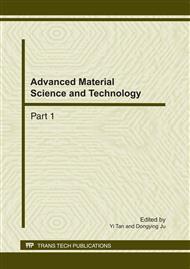p.1045
p.1049
p.1053
p.1061
p.1065
p.1069
p.1073
p.1077
p.1081
Adsorption of H2S and SO2 on Activated Carbon Fibers Modified by Ammonium Nitrate
Abstract:
The enhancement effect of using PAN-based carbon fibers surface modified by ammonium nitrate for removing SO2 and H2S in moist air at room temperature was characterized and investigated. The pore structure of the samples so prepared was examined by adsorption measurement. Surface groups introduced by treatment with ammonium nitrate was assessed by xray photoelectron spectroscopy. The results show that the amount of sulfur dioxide and hydrogen sulfide adsorbed with the treated carbon fibers are increased by 112% and 93% and ammonium nitrate treatment improved original carbon fibers adsorption performance, not only by introducing nitrogen surface groups, but also by extending the surface area.
Info:
Periodical:
Pages:
1065-1068
Citation:
Online since:
February 2011
Authors:
Price:
Сopyright:
© 2011 Trans Tech Publications Ltd. All Rights Reserved
Share:
Citation:


